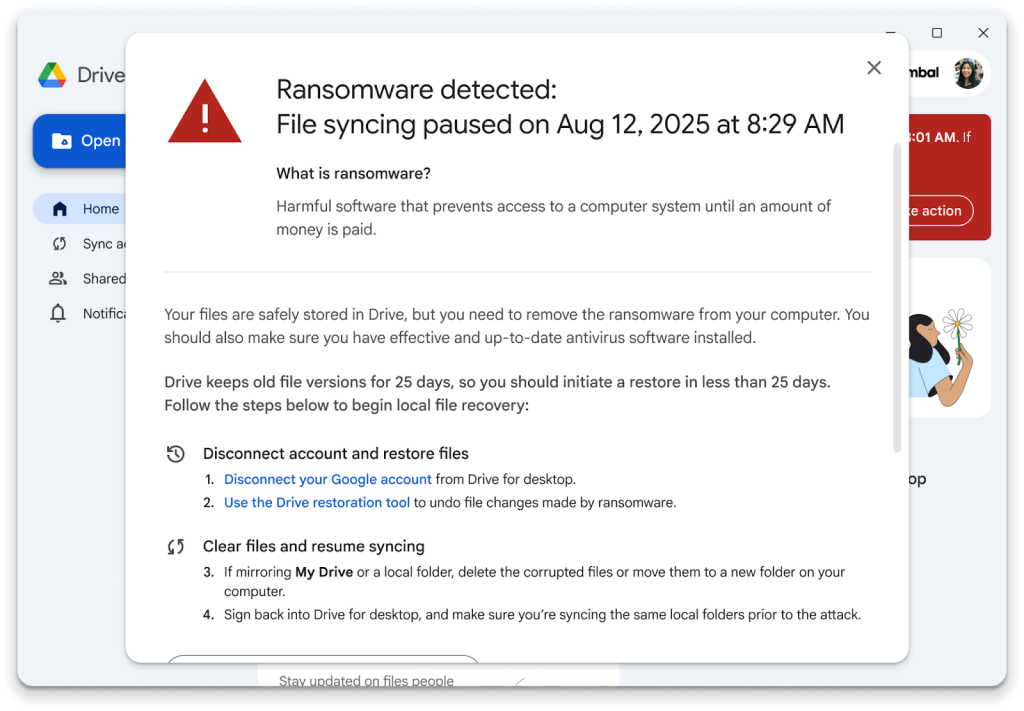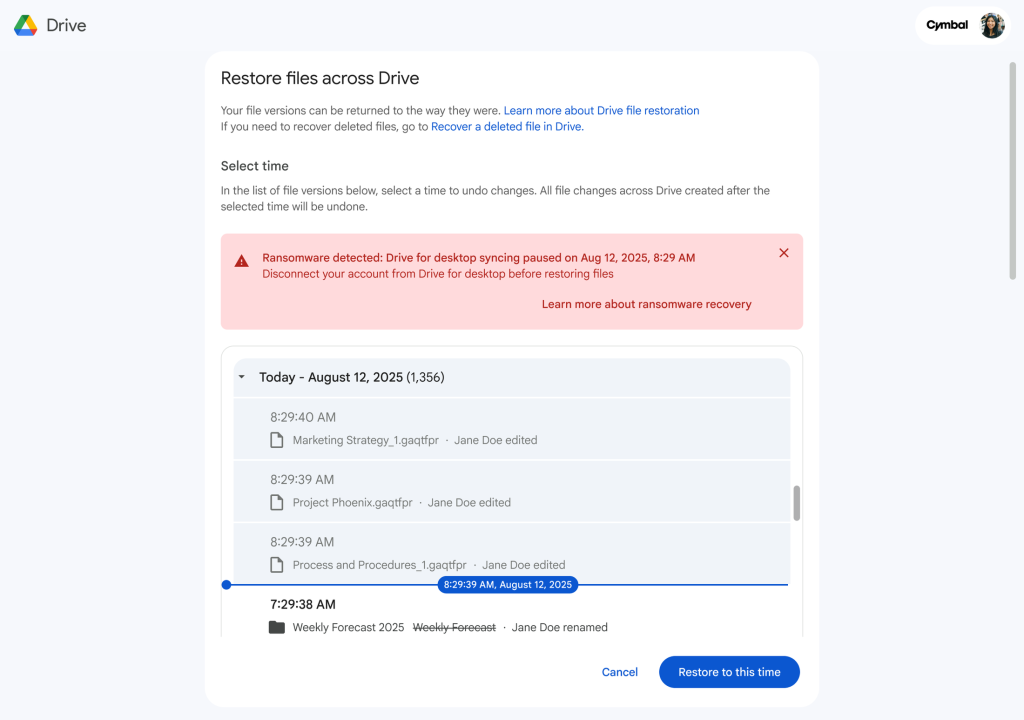Ransomware remains one of the most damaging cyber threats to organizations, driving multimillion-dollar outages, data loss, and cascading operational disruption across sectors from healthcare and education to manufacturing and government.
Google is introducing an AI-powered ransomware detection capability for Drive for desktop that adds a fresh layer of protection: halting cloud sync the moment mass file encryption behavior is detected and enabling rapid, user-friendly file restoration.
Unlike native Google Workspace formats (Docs, Sheets), which are inherently resilient to ransomware, traditional file types like Microsoft Office and PDFs—especially on desktop operating systems—remain exposed.
Mandiant reports that ransomware-related intrusions represented 21% of all intrusions last year, underscoring its prevalence, while the average ransomware or extortion incident now exceeds $5 million in cost, amplifying the need for layered, resilient defenses.
The new Drive for desktop feature addresses this gap by identifying the core behavioral signature of ransomware: large-scale, abnormal file modifications that signal encryption or corruption.

When detected, Drive automatically pauses syncing of impacted files to the cloud, confining damage and preventing corrupted versions from propagating across shared drives or organizational repositories.
Strengthening Google Drive Security
This marks a shift from the traditional antivirus-first model. Classic AV aims to stop the malware executable before detonation; vital, but increasingly insufficient as adversaries evolve tooling, exploit zero-day, and use “living off the land” techniques to evade prevention.
Google’s approach assumes some threats will inevitably get through, then focuses on stopping ransomware’s business impact: the encryption of critical files and the subsequent operational standstill.
By interdicting sync at the first sign of mass tampering, Drive creates a protective buffer that preserves recoverability without forcing teams into complex rebuilds.
This rapid recovery capability helps to minimize user interruption and data loss, even when using traditional software such as Microsoft Windows and Office.

The detection engine is powered by a specialized AI model trained on millions of real-world ransomware samples and continuously refreshed with signals and threat intelligence, including from VirusTotal.
Available for Windows and macOS, Drive for desktop monitors file activity patterns, flags unusual modification bursts, and pauses sync when indicators reach risk thresholds.
Users receive a desktop and email alert with guided remediation, leading to a streamlined, point-and-click web workflow to restore multiple files to their last known-good state—minimizing downtime and data loss even in mixed environments running Windows and Microsoft Office.
Automatic Response and Alerts
Drive complements this behavior-based defense with Google’s broader safeguards across Gmail, Chrome, and built-in Drive virus scanning to reduce lateral spread and cross-device compromise.
For administrators, alerting integrates with the Admin console and Security Center, providing visibility, audit trails, and policy control.
The feature is on by default, with options for IT to tune or disable end-user restoration where necessary, aligning with governance needs and incident response playbooks.
Google also reiterates that customer data is not used for advertising or to train/fine-tune generative AI models without customer permission, addressing privacy and compliance considerations for regulated sectors.
The user experience centers on speed and simplicity: detect, pause sync, notify, and restore. That sequence helps prevent cloud-scale corruption, keeps teams productive, and reduces reliance on costly, time-consuming third-party recovery mechanisms.
It also offers immediate value beyond Google-native files, benefiting organizations with heterogeneous productivity stacks.
As Bob O’Donnell, President and Chief Analyst at TECHnalysis Research, notes, integrating AI-powered detection and restore into Drive provides an innovative, pragmatic way to blunt a rising threat while empowering end users to keep working—useful for Google Workspace customers and those who rely on other office suites alike. In an era where ransomware disrupts core business operations, this layered, behavior-focused control materially advances enterprise resilience.
Follow us on Google News, LinkedIn, and X to Get Instant Updates and Set GBH as a Preferred Source in Google.